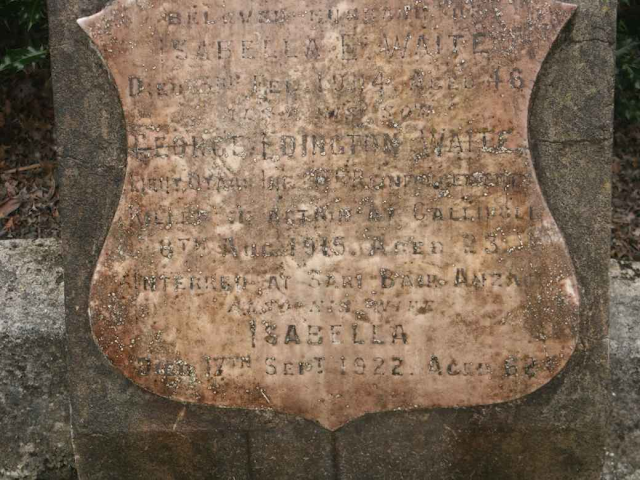A GREAT EXPERIENCE.
LIFE ON GALLIPOLI.
Sergeant-major Titchener, of the local Defence office, has received a letter from Lieutepant G. E. Waite (now unofficially reported killed in action), in which that officer described in characteristically cheerful language some of the experiences of himself and the Fourth Reinforcements, with whom he held his commission.
After referring to the sights of Cairo, Lieutenant Waite proceeded: — We were taken on board the the same day as our arrival in Alexandria. Left for Lemnos same night. I can’t tell you any particulars about this place, but perhaps will get a chance anon. Stayed there a week, then came on here in smaller boats. Landed at night. In a couple of days were drafted to onr companies, and two days later I was in the firing line. Was at this post in firing trench and local reserves for 16 days. At present we are resting. This is knocking off work to carry bricks, as there are fatigues day and night —roads, saps, trenches, etc. Were not far from the firing line, and are always under fire of the enemy’s shells and bullets. To-day Jack Turk sent up a box kite. A little after his disappearance a shrapnel shell burst just at the back of our dug-outs. This was kept up for about half an hour without inflicting any casualties, the nearest thing being a ball through the major’s hat. This job is a great experience. Just by my foot lies a splinter of a high-explosive shell. It’s about 18in long and about 6in wide, so goodness knows what sized shell it was. More later.
Thursday morning, July 1. — Last night was the wildest I have ever experienced. At about 9 o’clock the sky became overcast, with occasional flashes of lightning. The darkness deepened, until it became pitch black, arid the lightning leaped across the sky in sheets. The accompanying thunder wasn’t so violent as I’ve heard it in New Zealand, but more continuous. Owing to the darkness, both our firing line and the Turks’ opened fire, as it was too dark to watch each other’s movements. What with the sheets of rain, booming of the lightning, and big guns, to say nothing of bombs, rifle and machine-gun fire, the whole show was Hell. I suppose you will have heard of Clive Cargill’s casualty. He was sniped about two weeks ago. He just arrived here about a week before me. I was with him at Zeitoun, and later saw him at his work here. He was with the Headquarters’ signallers, whose work is mostly telephone and telegraph. They do so many hours per day in the office and so many on the upkeep of the lines. The day that he was hit he was going along the main line making repairs. He had evidently done a repair, and moved on, when he discovered that he had left his pliers at the last job. While retracing his steps he was shot through the side (about the groin) and back. Needless to say, either of these wounds would be serious. I believe that’s exactly how the affair occurred, because it is just how snipers work. They search with a telescope until they get on to a sap or pathway whjch, perhaps, exposes a passer-by for a few seconds, then watch this place for hours until someone is unfortunate enough to get it. I suppose they just missed Clive going down, but kept a good watch in case he came back. (That's only my theory, but I think it’s not far out.) I didn’t get a chance to see him before he went aboard the hospital ship, nor have I heard anything definite since. However, I’ve heard from several unofficial sources that he died of his wounds. If that is true you will know before this reaches you. It just shows that those who work behind the firing line run just as much risk of being hit as those actually in the line. Aeroplanes making a reconnaissance here. Old Jack Turk fires at them with shrapnel and machine guns, but never scores a hit. Sometimes they drop two or three bombs in among the Turks’ trenches; then you see sandbags, overhead cover, and bits of Turks flying up hundreds of feet into the air. I’m sorry I can’t give you anything definite about our position or doings. Anzac Cove isn’t on the map, but was coined by the first people who landed here. Anzac stands for Australian-New Zealand Army Corps. -Evening Star, 20/8/1915.


No comments:
Post a Comment